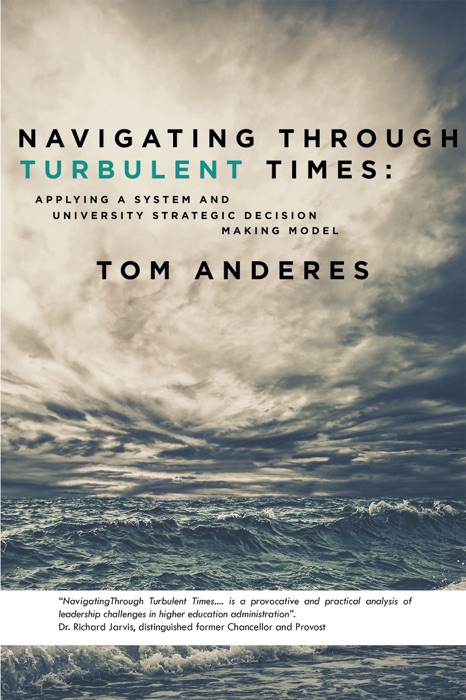(DOWNLOAD) "Navigating Through Turbulent Times: Applying a System and University Strategic Decision Making Model" by Tom Anderes ~ eBook PDF Kindle ePub Free

eBook details
- Title: Navigating Through Turbulent Times: Applying a System and University Strategic Decision Making Model
- Author : Tom Anderes
- Release Date : January 20, 2015
- Genre: Education,Books,Professional & Technical,
- Pages : * pages
- Size : 914 KB
Description
Readers and leaders interested in planning and leadership in higher education will receive two primary benefits from the book Navigating Through Turburlent Times........ First, a strategic decision making model that they can apply with their leadership teams in universities, systems and Boards. Second, they will be exposed to real life experiences from turbulent or unstable environments that they will likely confront during their careers. The six components of the strategic decision making model are laid out in detail and used as the focus for recognizing and resolving issues that contribute to instability. The integration of the model with the actual experiences provides leaders and their support teams with a comprehensive tool to address current and future challenges.
The model components include: 1) an organizational mentality committed to strategic thinking, 2) a maximum amount of historical data and information for analysis to inform decision makers, 3) highly globalized scans of the future integrated with other decision making information, 4) ongoing strategic planning processes, 5) transparency to incorporate all key constituencies in planning and 6) a planning and assessment framework that allows leaders to weigh and filter information into thoughtfully constructed strategic alternatives and action plans. The success of the model is based on the integration of all components, with strategic thinking permeating all aspects of decision making.
Ultimately leaders and leaders in waiting will be able to better anticipate and resolve problems through the use of the six major interactive components of the model. Problems (as reflected through the experiences) that create instability such as dramatic funding reductions, unanticipated leadership successions, rapidly increasing student costs, limited communications with constituencies, limited planning and strategic thinking, etc. can be considered from the outset of thoughtful, strategic planning and thinking exercises and not simply "fixed" after alternative strategies are in place.